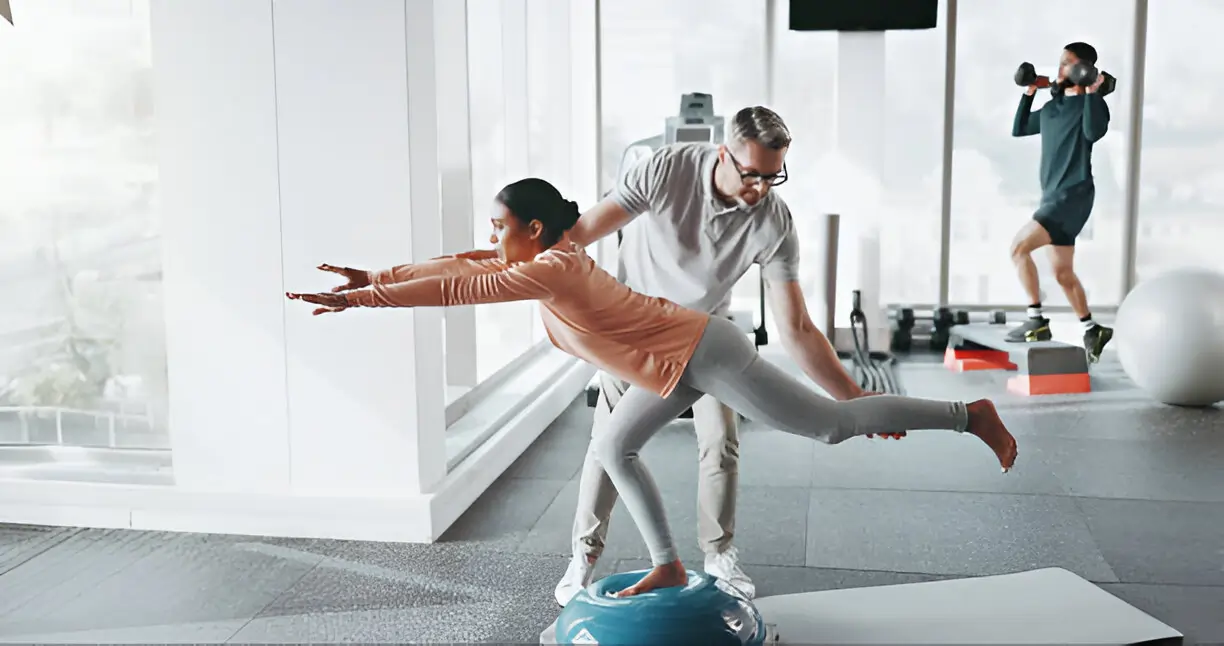Falls represent one of the leading causes of injury among older adults and individuals recovering from medical conditions or surgeries. Balance training through physiotherapy offers a proven approach to reducing fall risk by addressing the underlying physical factors that contribute to instability.
Professional physiotherapists design targeted knee pain physio treatment solutions that improve coordination, strengthen core muscles, and enhance proprioceptive awareness. These interventions create measurable improvements in stability and confidence during daily activities.
Evidence-Based Balance Training Techniques In Clinical Practice
Physiotherapists employ a comprehensive range of balance training methods that target specific deficits and gradually build stability skills:
- Static Balance Exercises – Static balance training begins with basic standing exercises that challenge the body’s ability to maintain equilibrium while stationary. Patients practice single-leg stands, heel-to-toe positioning, and eyes-closed balance holds to improve postural control. These foundational exercises strengthen the deep stabilizing muscles around joints while enhancing sensory integration.
- Dynamic Balance Training – Dynamic exercises focus on maintaining stability during movement, which mirrors real-world activities where falls typically occur. Walking heel-to-toe, side-stepping, and directional changes challenge the body’s ability to adjust quickly to shifting weight distributions. Physiotherapists incorporate obstacle navigation, dual-task activities, and varied walking speeds to simulate everyday scenarios.
- Strength and Coordination Integration – Balance training programs include targeted strengthening exercises for key muscle groups that support postural stability. Hip abductors, ankle dorsiflexors, and core muscles receive specific attention through functional movement patterns. Coordination drills combine upper and lower body movements to challenge the nervous system’s ability to process multiple inputs simultaneously.
- Proprioceptive Enhancement Activities – Proprioception training improves the body’s awareness of joint position and movement in space, which becomes crucial for fall prevention. Exercises using unstable surfaces, closed-eyes conditions, and perturbation training help retrain sensory systems. Physiotherapists progressively challenge these systems through controlled destabilization techniques that safely push patients beyond their comfort zones.
- Functional Task Training – Real-world balance challenges are addressed through functional task practice that mirrors daily activities. Patients practice getting up from chairs, navigating stairs, reaching for objects, and turning movements under supervised conditions. These activities identify specific movement patterns that increase the risk of falls and enable targeted interventions. Environmental modifications and assistive device training complement exercise interventions when appropriate.
- Technology-Assisted Balance Training – Modern physiotherapy clinics incorporate advanced technologies, such as computerized balance platforms, virtual reality systems, and biofeedback devices. These tools provide objective measurements of balance performance and create engaging training environments that enhance balance. Real-time feedback helps patients understand their balance deficits and track improvement over time. Technology integration enhances traditional balance training approaches with precise monitoring and motivation.
Building Long-Term Stability And Confidence With Balance Training
The impact of professional balance training extends far beyond the clinical setting, creating lasting improvements in daily function and quality of life. The psychological benefits of a sports physiotherapy near me prove equally crucial as the physical improvements, since fear of falling often leads to activity avoidance and further functional decline.
Physiotherapy-based balance training creates a foundation for lifelong fall prevention through education, exercise prescription, and ongoing support. Patients learn to recognize their personal fall risk factors and implement appropriate strategies in various environments.
Read more: What Today’s Retirees Really Want in a Home
Innovative Test Generation Techniques for Modern Applications
Enhancing Construction Site Productivity Through Wearable Tech
